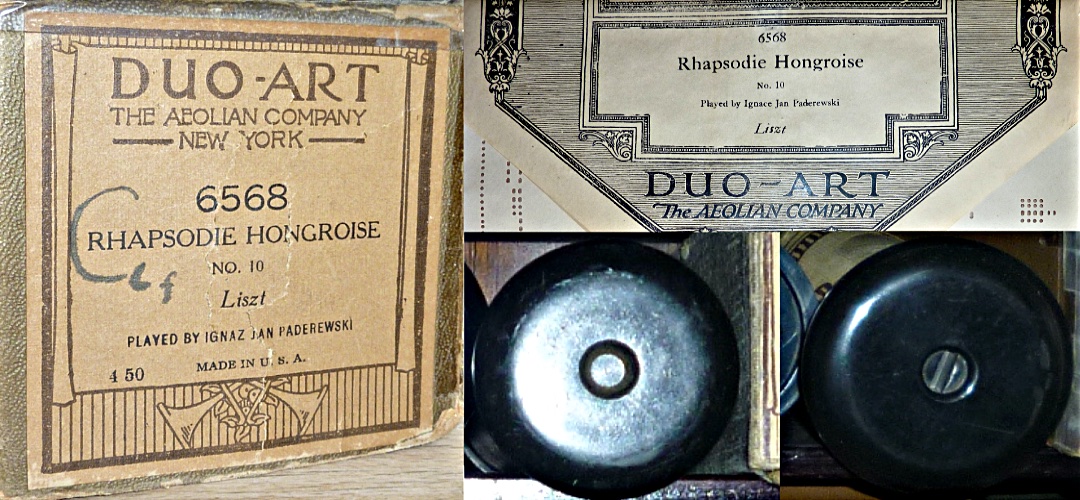The Duo-Art rolls from the Aeolian Company are based on the standard 88-note format and also have the holes required for reproduction. The Duo-Art music rolls can therefore also be played on normal 88-note standard pianolas - all you need to do is mask off four holes in the bass and four holes in the treble, as these are intended for emphasis control. The Duoart rolls have the distinctive Duoart decoration on thicker paper at the beginning of the roll, with the roll number, title and performer in the centre. Some rolls also have a photo of the pianist slightly above the beginning of the roll. In addition to this label, the boxes often bear the pianist's signature and usually also the price of the roll. As with the 88-note rolls, the sides are made of black Bakelite. There is a round eyelet at the start of the roll for attaching it to the reel. The Duoart rolls are available in large numbers in America and England as well-preserved originals. The paper is 28.6 cm wide.
Duo-Art by Aeolian plays 85 notes. The repertoire is particularly interesting as, in addition to the large classical repertoire, the musical genres of ragtime, blues, jazz, etc. are also strongly represented. Just as S. Rachmaninoff was a major contributor to Ampico's sales success, so is I. Paderewski with his many recordings on Aeolian Duo-Art. Other titles only available on Duo-Art, e.g. Gershwin's Rhapsody in Blue as well as titles by Stravinsky and others make Duo-Art very interesting. At the beginning of the 1930s, Aeolian also issued the Audiographic Series and the Educational Series, among others, which are music rolls with plenty of information about the composer, piece and pianist at the beginning of the roll. Beautiful.


